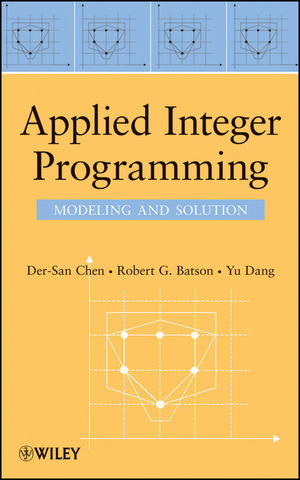| C:\projects\lsi\src\Development\TMS\Source\TestResults\erwin_ERWIN-THINK 2011-11-07 14_32_27\Out>type model.oml
Model[
Decisions[
Integers[0, 58], This model is a little bit ugly as it was generated automatically by SaveModel.
Foreach[ However it shows it is pretty small.
{iter1, 59},
x[iter1]
]
],
Constraints[
prereq0 -> x[13] < x[0],
prereq1 -> x[20] < x[1],
prereq2 -> x[17] < x[2],
prereq3 -> x[7] < x[3],
prereq4 -> x[19] < x[4],
prereq5 -> x[26] < x[5],
prereq6 -> x[8] < x[6],
prereq7 -> x[21] < x[7],
prereq8 -> x[4] < x[8],
prereq9 -> x[12] < x[10],
prereq10 -> x[0] < x[11],
prereq11 -> x[18] < x[12],
prereq12 -> x[3] < x[13],
prereq13 -> x[9] < x[14],
prereq14 -> x[27] < x[15],
prereq15 -> x[5] < x[16],
prereq16 -> x[15] < x[17],
prereq17 -> x[6] < x[18],
prereq18 -> x[16] < x[19],
prereq19 -> x[22] < x[20],
prereq20 -> x[23] < x[21],
prereq21 -> x[14] < x[22],
prereq22 -> x[25] < x[23],
prereq23 -> x[10] < x[24],
prereq24 -> x[24] < x[25],
prereq25 -> x[2] < x[26],
prereq26 -> x[1] < x[27],
prereq27 -> x[29] < x[28],
prereq28 -> x[31] < x[29],
prereq29 -> x[32] < x[30],
prereq30 -> x[33] < x[31],
prereq31 -> x[28] < x[32],
prereq32 -> x[36] < x[34],
prereq33 -> x[34] < x[35],
prereq34 -> x[38] < x[36],
prereq35 -> x[35] < x[37],
prereq36 -> x[42] < x[39],
prereq37 -> x[39] < x[40],
prereq38 -> x[44] < x[40],
prereq39 -> x[45] < x[40],
prereq40 -> x[49] < x[40],
prereq41 -> x[53] < x[40],
prereq42 -> x[54] < x[40],
prereq43 -> x[56] < x[40],
prereq44 -> x[56] < x[41],
prereq45 -> x[56] < x[42],
prereq46 -> x[56] < x[43],
prereq47 -> x[50] < x[44],
prereq48 -> x[52] < x[45],
prereq49 -> x[57] < x[45],
prereq50 -> x[56] < x[46],
prereq51 -> x[56] < x[47],
prereq52 -> x[39] < x[48],
prereq53 -> x[44] < x[48],
prereq54 -> x[45] < x[48],
prereq55 -> x[49] < x[48],
prereq56 -> x[53] < x[48],
prereq57 -> x[54] < x[48],
prereq58 -> x[56] < x[48],
prereq59 -> x[43] < x[49],
prereq60 -> x[46] < x[49],
prereq61 -> x[56] < x[50],
prereq62 -> x[56] < x[52],
prereq63 -> x[41] < x[53],
prereq64 -> x[47] < x[54],
prereq65 -> x[40] < x[55],
prereq66 -> x[48] < x[55],
prereq67 -> x[51] < x[56],
prereq68 -> x[56] < x[57],
alldiff -> Unequal[Foreach[
{iter2, 59},
x[iter2]
]]
]
]
C:\projects\lsi\src\Development\TMS\Source\TestResults\erwin_ERWIN-THINK 2011-11-07 14_32_27\Out>"\Program Files (x86)\Microsoft Solver Foundation\3.0.2.10889\Bin\MSFCli.exe" +verbose 0 model.oml
===== Processing .\model.oml =====
Solution Quality: Feasible
===Solver Foundation Service Report===
Date: 11/8/2011 11:09:55 PM
Version: Microsoft Solver Foundation 3.0.2.10889 Express Edition
Model Name: DefaultModel
Capabilities Applied: CP
Solve Time (ms): 184798 Timings with default settings
Total Time (ms): 185031
Solve Completion Status: Feasible
Solver Selected: Microsoft.SolverFoundation.Solvers.ConstraintSystem
===Solution Details===
Goals:
===== Finished .\model.oml: 00:03:05.0714386 ===== C:\projects\lsi\src\Development\TMS\Source\TestResults\erwin_ERWIN-THINK 2011-11-07 14_32_27\Out>"\Program Files (x86)\Microsoft Solver Foundation\3.0.2.10889\Bin\MSFCli.exe" +variable conflictdriven +verbose 0 model.oml
===== Processing .\model.oml =====
Solution Quality: Feasible
===Solver Foundation Service Report===
Date: 11/8/2011 11:06:38 PM
Version: Microsoft Solver Foundation 3.0.2.10889 Express Edition
Model Name: DefaultModel
Capabilities Applied: CP
Solve Time (ms): 203 Timings with option
Total Time (ms): 433
Solve Completion Status: Feasible
Solver Selected: Microsoft.SolverFoundation.Solvers.ConstraintSystem
===Solution Details===
Goals:
===== Finished .\model.oml: 00:00:00.4739553 ===== |








